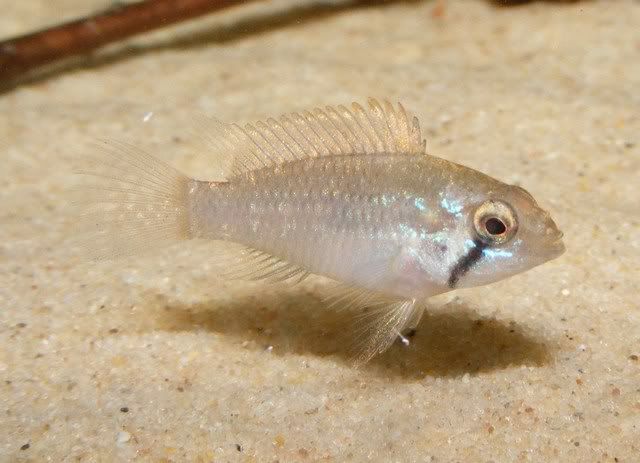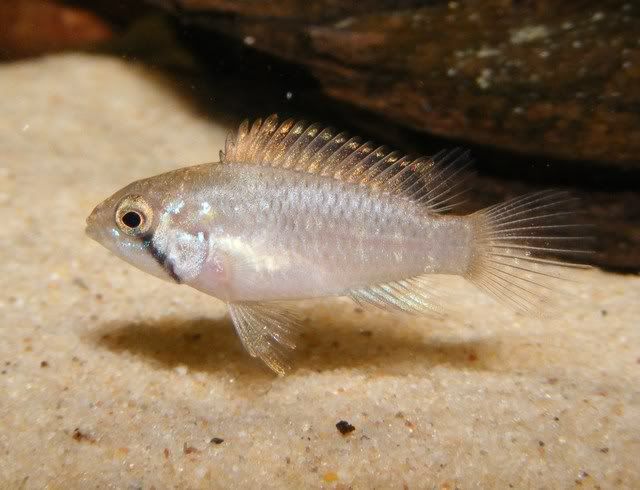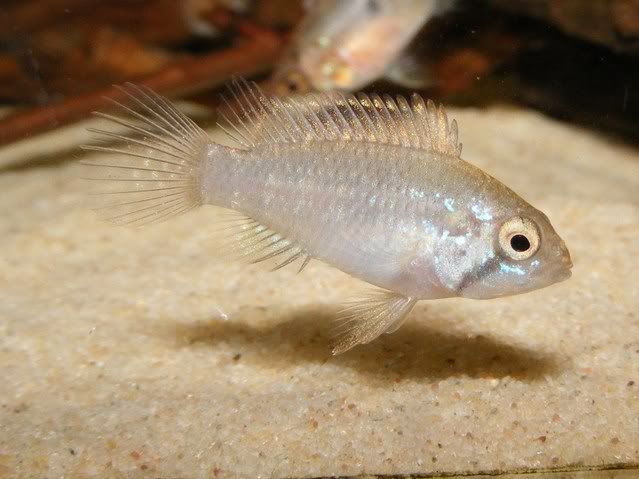- Messages
- 620
- Location
- Cheshire..UK
Its now been over a year since the first official import into the UK(Mark breeze late 2009, 20 fish imported, 19 lost and a single female survivor) there have since been two more successful imports to my knowledge(Pier aquatics, Rare aquatics April 2010)
At a guess i would say that the UK has a population of under 100 A.sp 'Kelleri' at the moment.
I picked up a good sized pair from the first import into Pier aqautics, i was amongst the first to do so and was very pleased to work with them. I received my pair in April 2010 and only managed to get some fry in December 2010!!! there have been a few problems to iron out so the purpose of this thread is to track the keepers/breeders of this fish and to invite you to describe the situation with this fish in your country and also your experiences. Its douptful that this fish will become a common import, much like all rarer species it is vital to continue this fish in the hobby as tank bred. Eventually we will need to inject fresh blood into the lines so it would be nice to have contact with all the breeders via this thread!
My experiences with this Large Apisto have been very positive, right from the start they settled in well and ate imediately, as with all my fish i feed fresh baby brineshrimp but due to the size of the fish i felt that this alone would not do the trick! i started adding white and grindal worms to the diet and the fish responded with better growth and condition.
I keep mine in a 24x12x12 tank containing a inert white sand substrate, several pieces of bogwood, oak and beech leaves and several coconut caves with small entrances. Water is adjusted to PH 4.8 - PH 5.5 with tiny amounts of phosphoric acid and is very soft TDS 55ppm..Water changes are done every two days.
Not long after receiving them i got my first spawn, the male spawned outside the cave as ive seen others do but after three days the female was back in the open and feeding, acting normal, this happened a further 5 times with the same results! No fry!
After watching them spawn again and seeing the male unsuccessfully trying to get into the breeding cave i decided to make a change, the old caves came out and two with much larger entrances were placed in. I didnt see them spawn next time round but noticed the female had spawned, i kept my eye on them and she remained in the cave after 3 days, next i saw her brooding and was delighted that the changes worked.
The first spawn numbered 8 fry which are around 4-5 weeks old, they were removed and the pair spawned again almost imediately, the second batch are 4 days freeswimming and number 10..
Broodcare is almost identical to A.barlowi which ive also spawned, the female will hold the larvae in her mouth for several hours and then quite happily place them down either in the cave or under a leaf in a pre dug pit, she will then feed normally before picking the fry up and heading back to the cave, once there it depended on the females mood whether she mouthed the fry or not.. After the fry are freeswimming no further mouthbrooding is witnessed.
Id be very happy for all owners/breeders of this fish to add to this thread your experiences or observations, even if you have not spawned them, your observations are still of use to those wishing to do so..
This is a lovely and interesting rare fish that deserves to remain in the hobby, UK breeders are slowly breeding this fish in small numbers, hopefully with more to come!
At a guess i would say that the UK has a population of under 100 A.sp 'Kelleri' at the moment.
I picked up a good sized pair from the first import into Pier aqautics, i was amongst the first to do so and was very pleased to work with them. I received my pair in April 2010 and only managed to get some fry in December 2010!!! there have been a few problems to iron out so the purpose of this thread is to track the keepers/breeders of this fish and to invite you to describe the situation with this fish in your country and also your experiences. Its douptful that this fish will become a common import, much like all rarer species it is vital to continue this fish in the hobby as tank bred. Eventually we will need to inject fresh blood into the lines so it would be nice to have contact with all the breeders via this thread!
My experiences with this Large Apisto have been very positive, right from the start they settled in well and ate imediately, as with all my fish i feed fresh baby brineshrimp but due to the size of the fish i felt that this alone would not do the trick! i started adding white and grindal worms to the diet and the fish responded with better growth and condition.
I keep mine in a 24x12x12 tank containing a inert white sand substrate, several pieces of bogwood, oak and beech leaves and several coconut caves with small entrances. Water is adjusted to PH 4.8 - PH 5.5 with tiny amounts of phosphoric acid and is very soft TDS 55ppm..Water changes are done every two days.
Not long after receiving them i got my first spawn, the male spawned outside the cave as ive seen others do but after three days the female was back in the open and feeding, acting normal, this happened a further 5 times with the same results! No fry!
After watching them spawn again and seeing the male unsuccessfully trying to get into the breeding cave i decided to make a change, the old caves came out and two with much larger entrances were placed in. I didnt see them spawn next time round but noticed the female had spawned, i kept my eye on them and she remained in the cave after 3 days, next i saw her brooding and was delighted that the changes worked.
The first spawn numbered 8 fry which are around 4-5 weeks old, they were removed and the pair spawned again almost imediately, the second batch are 4 days freeswimming and number 10..
Broodcare is almost identical to A.barlowi which ive also spawned, the female will hold the larvae in her mouth for several hours and then quite happily place them down either in the cave or under a leaf in a pre dug pit, she will then feed normally before picking the fry up and heading back to the cave, once there it depended on the females mood whether she mouthed the fry or not.. After the fry are freeswimming no further mouthbrooding is witnessed.
Id be very happy for all owners/breeders of this fish to add to this thread your experiences or observations, even if you have not spawned them, your observations are still of use to those wishing to do so..
This is a lovely and interesting rare fish that deserves to remain in the hobby, UK breeders are slowly breeding this fish in small numbers, hopefully with more to come!




